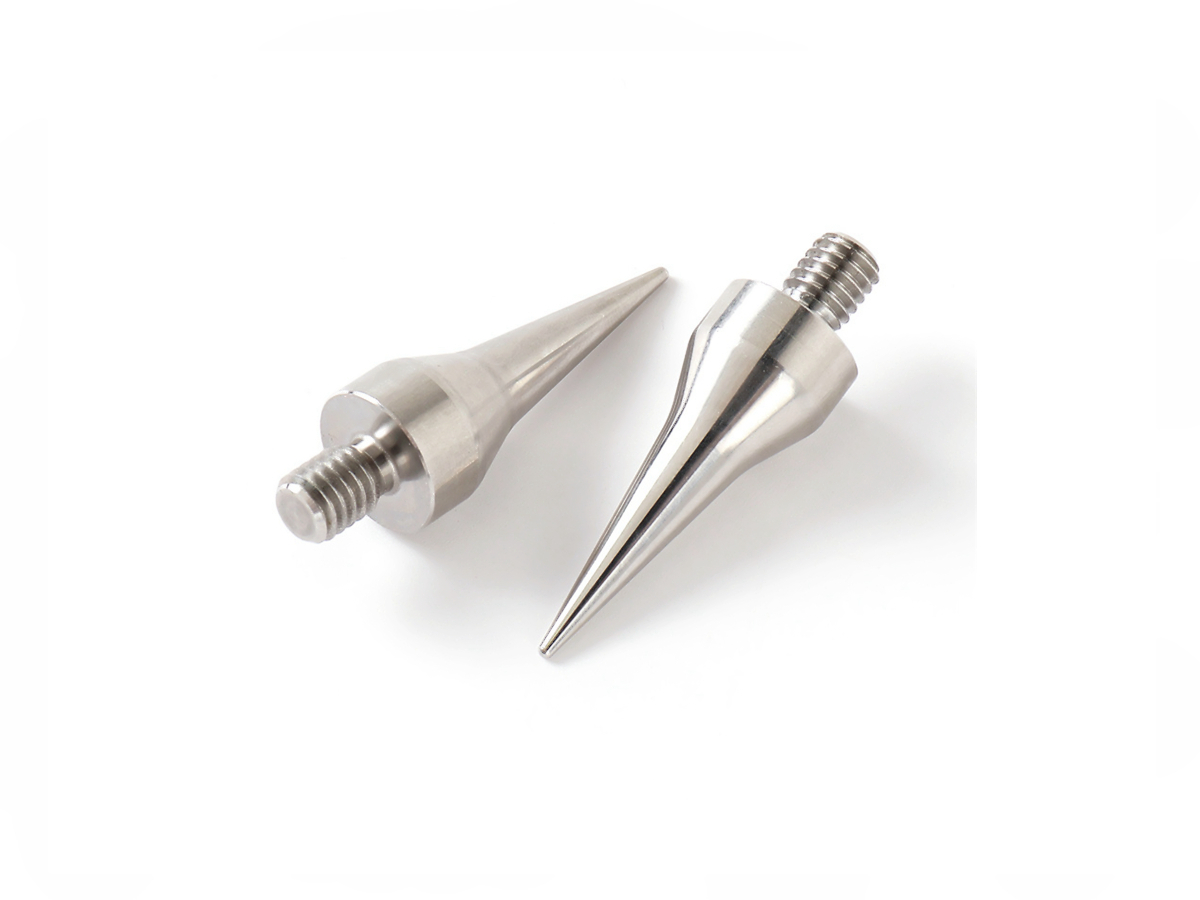Advanced CNC Machining for Diagnostic Equipment Parts and Assemblies
Introduction to CNC Machined Diagnostic Equipment Components
Precision diagnostic equipment requires high accuracy, reliability, and compliance with strict medical and industry standards. Custom CNC machining is essential for producing intricate components and assemblies such as imaging system housings, analytical device components, sensor enclosures, precision brackets, and complex mechanical assemblies. Preferred materials include aluminum alloys (6061-T6, 7075), medical-grade stainless steels (SUS304, SUS316L), engineering plastics (PEEK, ABS), and titanium alloys (Ti-6Al-4V), chosen for their dimensional stability, corrosion resistance, ease of sterilization, and compatibility with diagnostic environments.
Utilizing expert CNC machining services, diagnostic equipment manufacturers achieve precise tolerances, complex geometries, and reliable performance required for consistent medical diagnostic accuracy.
Material Performance Comparison for Diagnostic Equipment Components
Material | Tensile Strength (MPa) | Yield Strength (MPa) | Corrosion Resistance (ASTM B117) | Machinability | Typical Applications | Advantages |
|---|---|---|---|---|---|---|
310-345 | 276 | Excellent (>800 hrs) | Excellent | Equipment enclosures, brackets | Lightweight, stable dimensional accuracy | |
515-620 | 205-310 | Excellent (>1000 hrs) | Good | Instrument housings, mechanical parts | High strength, excellent sterilization compatibility | |
90-100 | N/A | Excellent (chemically inert) | Very Good | Analytical device components, sensor covers | Chemical inertness, electrical insulation | |
950-1100 | 880-950 | Superior (>1200 hrs) | Moderate | High-precision diagnostic assemblies | Exceptional strength-to-weight ratio, corrosion resistance |
Material Selection Strategy for CNC Machined Diagnostic Components
Selecting the right material ensures diagnostic components meet rigorous medical and operational standards:
Aluminum 6061-T6 is preferred for lightweight, dimensionally stable parts such as imaging housings and device frames due to excellent machinability and corrosion resistance (ASTM B117 >800 hrs).
Stainless Steel SUS304 provides superior sterilization compatibility, durability, and strength, ideal for mechanical assemblies and diagnostic instrument housings frequently exposed to sterilization processes.
PEEK Plastic offers excellent chemical resistance, electrical insulation, and mechanical stability, suitable for analytical equipment components and sensor enclosures requiring minimal interference in diagnostic imaging.
Titanium Ti-6Al-4V is optimal for high-precision and structurally demanding assemblies requiring high strength, lightweight properties, and outstanding corrosion resistance (ASTM B117 >1200 hrs).
CNC Machining Processes for Diagnostic Equipment Components
CNC Machining Process | Dimensional Accuracy (mm) | Surface Roughness (Ra μm) | Typical Applications | Key Advantages |
|---|---|---|---|---|
±0.005 | 0.2-0.8 | Complex equipment assemblies | High complexity, superior accuracy | |
±0.005-0.01 | 0.4-1.2 | Cylindrical diagnostic parts | Precise rotational geometry | |
±0.01-0.02 | 0.8-1.6 | Mounting features, connectors | Accurate positioning, consistent results | |
±0.002-0.005 | 0.1-0.4 | Precision mechanical components | Exceptional dimensional control |
CNC Process Selection Strategy for Diagnostic Equipment Components
Choosing appropriate CNC machining processes ensures high accuracy, compliance, and consistent performance:
5-Axis CNC Milling allows complex, highly detailed parts to be produced with ±0.005 mm accuracy, ideal for sophisticated diagnostic assemblies, ensuring alignment and functionality.
CNC Turning achieves precise rotational accuracy (±0.005 mm) critical for cylindrical components, fittings, and mechanical drive parts within diagnostic devices.
CNC Drilling ensures accurate hole placement and precision alignment (±0.01 mm), essential for reliable assembly of diagnostic equipment parts.
CNC Grinding provides ultra-precise surfaces (±0.002 mm accuracy), vital for components demanding exact tolerances, smooth operation, and high reliability in diagnostic equipment.
Surface Treatment Performance Comparison for Diagnostic Equipment Components
Treatment Method | Surface Roughness (Ra μm) | Corrosion Resistance (ASTM B117) | Surface Hardness | Typical Applications | Key Features |
|---|---|---|---|---|---|
0.4-1.0 | Excellent (>1000 hrs) | HV 400-600 | Aluminum diagnostic components | Enhanced durability, aesthetic finish | |
0.4-1.0 | Outstanding (>1200 hrs) | N/A | Stainless steel diagnostic parts | Enhanced corrosion resistance, sterilization compatible | |
0.1-0.4 | Superior (>1000 hrs) | N/A | Precision components, sterile surfaces | Ultra-smooth finish, improved cleanliness | |
0.1-0.3 | Superior (>1500 hrs) | HV 1500-2500 | High-wear parts, mechanical assemblies | High hardness, long-term wear resistance |
Surface Treatment Selection for CNC Machined Diagnostic Components
Optimal surface treatments enhance the reliability, safety, and performance of diagnostic equipment:
Anodizing enhances durability and provides aesthetic finishes (HV 400-600), ideal for aluminum housings exposed to handling and sterilization.
Passivation significantly boosts the corrosion resistance of stainless steel components (ASTM B117 >1200 hrs), which is crucial for ensuring sterile and durable diagnostic equipment.
Electropolishing ensures ultra-smooth surfaces (Ra ≤0.4 µm), beneficial for components needing high cleanliness standards, minimizing contamination risks.
PVD Coating dramatically increases surface hardness (HV 1500-2500) and wear resistance, ideal for mechanical assemblies within diagnostic instruments requiring sustained precision.
Typical Prototyping Methods for Diagnostic Equipment Components
CNC Machining Prototyping: Produces precise functional prototypes (±0.005 mm accuracy) for regulatory approval and comprehensive performance validation.
Rapid Molding Prototyping: Enables quick production of realistic, functional prototypes for thorough testing and feedback.
Metal 3D Printing (Powder Bed Fusion): Allows rapid iteration of complex designs (±0.05 mm accuracy), supporting development and optimization.
Quality Assurance Procedures
CMM Inspection (ISO 10360-2): Validates dimensional accuracy within ±0.005 mm.
Surface Roughness Testing (ISO 4287): Confirms smooth surfaces meeting diagnostic equipment standards.
Corrosion Resistance Testing (ASTM B117): Assesses material durability.
Non-Destructive Testing (ASTM E1444, ASTM F601): Ensures integrity without compromising components.
ISO 13485 and ISO 9001 Certified Documentation: Guarantees compliance, traceability, and high-quality management in diagnostic equipment manufacturing.
Related FAQs:
What materials are optimal for diagnostic equipment CNC machining?
How does CNC machining enhance diagnostic device accuracy?
Which surface treatments benefit diagnostic components?
Why prototype diagnostic equipment parts?
How are CNC machined diagnostic parts quality-assured?

